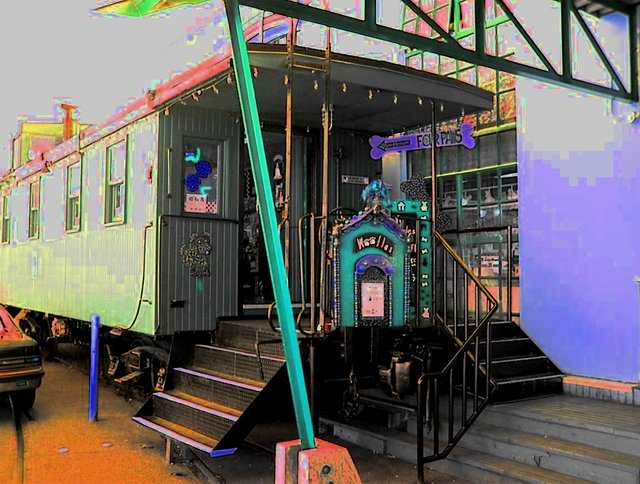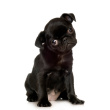I was thinking recently after being asked what my favorite book was and why. I came to the conclusion that it is, and was, one of the first novels that I ever read yet remember so vividly. The title was in my editon "Black Beauty" by Anna Sewell and while alot of books and movies have come and gone I think this one has touched me far greater than any. Not only was it wonderful escapeism but it led to a greater understanding and need of sentimental treatment for animals and what that really means. Not just simple nurturing but safety, discipline, shelter, good food AND nurturing. Of course all the others really are a form of nurturing in the end anyways aren't they?
Here's an interesting factoid:
In 1809 Lord Erskine (hurray for the Scots) first introduced a bill in the British Parliament to prevent cruelty to animals. Two years later, in 1824, came the world's first animal welfare society--the Society for the Prevention of Cruelty to Animals (SPCA). In 1866 Henry Bergh founded the ASPCA (American Society for the Prevention of Cruelty to Animals) in New York city.
The following snippet I came across on a site called believermag.com and were I not reading the ink myself I would think I may have wrote it for the most part indeed.
*
Anna Sewell was not exactly someone you’d want to sign up for a three-book deal. In 1871 she was already fifty-one years old, a first-time novelist, and she’d never shown any particular inclination for writing before. Lame since childhood, her increasing frailty had turned her into a shut-in; eight months before her hopeful diary entry, a doctor had predicted that Sewell had eighteen months left to live. To begin a book while halfway to her deathbed might have looked pointless indeed, especially when, as Margaret Sewell later recalled, “My aunt could never read or write for more than a short time at a sitting.” Sometimes weakness would so overcome her that days or weeks of enforced rest followed.
And yet her “life of a horse” was not such a strange goal. Her mother Mary was an established Quaker author of children’s verse and fiction, and horses happened to be a subject close to Anna Sewell’s heart; her disability left her dependent on them for getting about. Family members had noticed her intuitive knowledge of how to handle them, as well as her penchant for speaking gently to them as they rode. Having lived unmarried with her mother for her entire life, Anna also had the veritable room of her own, on the second floor of their home at 125 Spixworth Road.
There she convalesced, stared out over the fields, and would sometimes make it across the room to her desk. Writing progressed with agonizing slowness between long bedridden stretches. Her eighteen months came and went. She was still alive, though so close to death that she stopped bothering with doctor’s visits altogether: there was no point. But she lived another eighteen months, and another eighteen, and another still. In August 1877 she made one of the final notes in her diary: My proofs of Black Beauty are come—very nice type.
The completed story recounts the life and times of the well-bred horse of the title, and such stable companions as gentle Merrylegs and the angry and spirited Ginger; echoing throughout the book is the memory of Black Beauty’s mother Duchess, with her admonitions to stay gentle and mannered at all times. Surrounding these horses is a procession of good, bad, and indifferent owners: the well-meaning but inept rookie Joe Green, the drunkard Reuben Smith, the callous and cruel cabdriver Nicholas Skinner. Sewell sold this story, and all its rights, to the publishing house Jarrold & Sons for the staggeringly cheap advance of £20. But she was wise to get her cash up front.
The book was published in November: Anna was dead in April.
*
Black Beauty: His Grooms and Companions; The Autobiography of a Horse, Translated from the Original Equine by Anna Sewell is the most overlooked book in the entire canon of English literature: it is the 800-pound horse in our living room. Why, you’d think the smell alone would make us take notice. Black Beauty is one of the best selling books ever published; a century after its publication, Sewell’s dying work was estimated to have sold approximately thirty million copies. Several decades since have surely added many millions more to that total. Black Beauty has been translated into everything from Swedish to Hindustani, and made and remade many times over in both silent and sound movies, as well as a TV series. It has also generated sheaves of sequels—including Son of Black Beauty, which sounds like a swell idea for a book until you recall that Black Beauty was a gelding. No matter: he is an unstoppable force. Nearly everyone has heard of him, many have read him, and few have any notion whatsoever of his origins.
I cannot find a single academic monograph dedicated to examining Black Beauty. The book’s critical obscurity is matched by that of Anna Sewell herself; the only full-length biography devoted to her, The Woman Who Wrote Black Beauty, has been out of print for thirty years, and was more about mother Mary Sewell than about Anna herself. As biographer Susan Chitty readily admitted, Anna was almost impervious to biography: her one surviving diary is a tatty notebook of fourteen pages in length. Compare this to Sewell’s rival in the shut-in spinster-genius sweepstakes, Emily Dickinson: she, at least, left hundreds of letters behind. Of Anna Sewell we have little but what comes, so to speak, straight from the horse’s mouth.
But oh, how he spoke!
I read Black Beauty dozens of times as child. Whenever I was laid up with the flu, out of school on a snow day, or simply wanted to shut out the world for a while, this was the book I’d turn to. I had no idea, when miserably feverish, that I was reading it the way it had been written—in a sickbed. But I would not have dwelt long on this, even had I known: I set aside Black Beauty when I was twelve or so, as the approach of junior high school forced me out of childish things and, in their stead, into foolish things.
It was over a decade before I picked it up again, during a four-month purgatorial stretch of unemployment after finishing college; stuck in my old teenage attic bedroom, I stayed up until four or five a.m. every night reading through my childhood bookshelf. It was still dusty and untouched from the day I’d left for college, and composed solely of those books I had seen unfit to take with me, the castoffs spurned from my new adult existence. Eventually I made my way across the bottom shelf to the old copy of Black Beauty, still pristine in its slipcase, and I read it once again.
It was just as I remembered, even down to the smooth plate illustration of the young colt nursing at his mother’s side. But as I read the book, a curiously different sense of familiarity crept over me: and then, sheer disbelief. I rummaged my college copy of the Norton Anthology out of a duffel bag, flipped about halfway into it, and read it; then I looked back at Sewell’s tale incredulously. Her work, which I had absorbed unblinkingly as a child, looked utterly different now: for the first time I could see what she’d done. She had taken an American slave narrative and replaced the slaves with horses.
*
Now, why would anyone do that? Necessity, for one thing. A first-time writer on her deathbed, Sewell gravitated to a form she was already deeply familiar with. As a Quaker with relatives active in both abolitionism and antivivisectionism, she’d grown up in a sect that had published slave narratives throughout the nineteenth century. And it starts to make sense when one considers how similar their plights are, for horses and slaves are both thinking and feeling beings turned into things: they are bought and sold by a series of masters; they are beaten; their families are scattered; their labor is taken from them. All along, neither can say a word.
In case you missed the titular metaphor, Black Beauty himself is also called “Darkie” or “Blackie” by his masters—a detail not lost upon the apartheid-era government of South Africa, which banned the book as a seditious text. The narrative arc follows that of thousands of other slave writers: a hazy memory of a brief but naïve childhood when he is still too young to be put to work; then, once his body is valuable enough, the breakup of his family as he is sold to a new owner; the occasional relatively happy day or kindhearted owner; and then a succession of owners who abuse him, steal his feed, and house him in miserable quarters. He makes friends among his fellow horses, but cannot count on any of them to stay near for long, as they die or are sold down the river—the River Thames, granted, but it might as well be the Mississippi.
The primal scene of enslavement comes early, after Black Beauty witnesses a hunt in a nearby field that has gone awry. A horse falls down, killing its rider:
Mr. Bond, the farrier, came to look at the black horse that lay groaning on the grass, he felt him all over, and shook his head; one of his legs was broken. Then someone ran to our master’s house and came back with a gun; presently there was a loud bang and a dreadful shriek, and then all was still; the black horse moved no more. My mother seemed much troubled; she said she had known that horse for years, and that his name was “Rob Roy”; he was a good bold horse, and there was no vice in him. She would never go to that part of the field afterwards.
Later Black Beauty discovers that he has unwittingly witnessed the death of his own brother. It is an appallingly understated realization. Not only has his mother shielded Black Beauty from grieving for this sibling—“We are only horses, and don’t know,” she says meekly as she watches Rob Roy die—but more subtly, we understand that she had never even told him that he had a brother in the first place.
“It seems that horses have no relations,” Black Beauty ponders, “at least, they never know each other after they are sold.”
Not long after Rob Roy’s death, the strapping young narrator is sold for £150; at the end of the book, he narrowly avoids the glue works by being sold for a fiver.
In the intervening pages, Black Beauty has been broken upon the carriage wheel of Victorian London: knees destroyed by drunken and inept riders, lungs pocked by filthy stables, windpipe half-broken by fashionable “bearing-reins,” and his body weakened by cheap feed. By the penultimate chapter, he is given up for dead in a street on Ludgate Hill. That the book then manages a happy ending of sorts is not saying much: every fellow horse that our protagonist has ever known is dead or gone. Black Beauty is quite possibly the most relentless tale of degradation ever entrusted to the embrace of little children. And yet it is also one of the most beloved.
*
There are at least twenty editions of Black Beauty currently in print. There have been paperbacks and hardcovers, illustrated editions and Braille editions, Black Beauty coloring and pop-up books, and a gleefully malicious Spike Milligan spoof featuring a protagonist with “a lovely body with a huge cock.” There is a Black Beauty quilt pattern. You can also, if you like, listen to Black Beauty on CD, cassette, or as an online audio download.
None of this was exactly what Anna Sewell had in mind. When it was first published, Black Beauty was sold as a fictionalized instruction manual. Still assuming her role as a translator “from the original Equine,” at the end of the book, Sewell includes a note to stable hands: “The Translator would recommend to them to procure an admirable little book, price fourpence, titled The Horse Book.” Sewell was primarily writing for teenagers and adults; more to the point, she was writing for stable hands and cabmen. Like their modern automotive counterparts careening up Sixth Avenue, cabbies were notorious for the rough usage of horses. Sewell explained not long before she died:
I have for six years been confined to the house and to my sofa, and have from time to time, as I was able, been writing what I think will turn out a little book, its special aim being to induce kindness, sympathy and an understanding treatment of horses. In thinking of Cab-horses, I have been led to think of Cabmen, and I am anxious, if I can, to present their true conditions, and their great difficulties, in a correct and telling manner.
The book crossed over to children through both luck and design. Sewell’s unadorned Quaker aesthetics, along with very short chapters—which may well have been necessitated by an inability to write for long at one sitting—combined to make a book that was both compelling and easy to read. Sewell was not unaware of this; an edition to be distributed in Sunday Schools was already in the works when she died, and her publisher advertised it as part of a line of moralizing and temperance tales for children.
The early days were not promising, though. Initial orders of Black Beauty by London booksellers totaled all of 100 copies, and for its first decade it received little attention. But it had the potential to turn into something bigger—much bigger. It tapped directly into the outrage and compassion underlying the beginnings of the animal-rights movement; shortly after its publication, one magazine mused that “if the Society for the Prevention of Cruelty to Animals had published the Autobiography of Black Beauty we should have said it had published its best work.”
Unlike most book reviews, this one actually proved to be prophetic. In February 1890, days after receiving a copy of the book from a friend, the American SPCA activist George Angell began raising money to initiate a massive print run; as the editor of the SPCA magazine Our Dumb Animals, he posted this italicized call to action:
I want to print immediately a hundred thousand copies. I want the power to give away thousands of these to drivers of horses. I want to send a copy postpaid to the editors of about thirteen thousand American newspapers and magazines.
Incredibly, this is exactly what he did. Within months the entire printing was given away. Others enthusiastically took up the reins: publishers began selling it, magazines gave it away as a premium, and the Frank Miller Harness Dressing Company put in a bulk order for fifteen tons of customized copies: any blank spaces in the chapters were filled with pictures of horses proudly wearing saddle blankets bearing the company’s name.
By the end of the year, 217,000 copies of Black Beauty had been sold, and sales only accelerated from there. The book now caught fire in its homeland as well, and soon copies sold in Britain were stamped with the endorsement Recommended by the R.S.P.C.A. There was something else new in the book, too. Amid the publishing uproar, Angell had quietly inserted a new subtitle into the Black Beauty title page:
The Uncle Tom’s Cabin of Horses.
Now doesn't that just make you go "hmmmmmm"???
If ever in a second hand bookstore take the opportunity to pick up a copy of Miss Sewell's work...hopefully a dusty well used copy.
An interesting headscratching turn of events happened to me about this particular book too.
I had a copy that I had purchaced at what we called the "snackbar" library on CFB base Greisbach in Edmonton. I had previously read this copy as a loaner from the library and when they were clearing out some stock it went on the sale table. I bought it and read it again, at about the age of 8 or 9. The book went astray after that but not before I had put my name just inside the cover. Move forward a dozen years or so and I am at a "fleamarket" sale in a mall I worked in and there was a copy of the same book so I bought it. It wassn't until I got back to my store that a staff member said I had terrible handwriting and when asked why she showed me that my signature on the inside of the book proved so. It was then that I told her trying to blink back a tear that I had signed the inside copy of the book a long time ago and it was meant to be mine again.
Now that was a thing to make ME go hmmmmmm.
Sunday, February 3, 2008
Subscribe to:
Post Comments (Atom)

































No comments:
Post a Comment